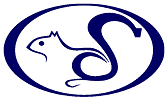|
|
If you've searched the Knowledge Base and not found your answer, you may ask
a new question of technical support.
More Instructions...
|
Spam Sleuth version 4.0 for Windows 95/98/Me/NT/2000/XP/2003
Q: How does the Turing Test work?
A: When an e-mail reaches the spam threshold (or
your custom threshold), a Turing Test Request is
sent out. It is a URL link that directs the user
to the www.spamsleuth.com site where they enter
some type in some characters they see in a
picture.
The test is extremely easy for humans, but not so
easy for computers. If they pass the test, then
a special "trigger" e-mail is sent back to you
which releases the original e-mail to your
InBox. You shouldn't see the trigger message, as
it is gobbled up by Spam Sleuth, but you should
get the original message into your InBox.
If you have "Add to Friends when Turing Test
Passed" checked, then the original sender's e-
mail address will be added to your Friends list
so they don't have to take the test next time
they send you something.
The Turing Test is not on by default, but it is a
great one to turn on because it allows you to get
more aggressive with your spam settings without
worrying that you'll miss an important e-mail.
It is important that you don't clean out your Mail Jail if you are relying on Turing to get your e-mail. The Turing will recover the message from the Mail Jail when the trigger message is received.
Top
Q: What is it?
A: It is a great way to make sure you get all your
important e-mail even if you have very aggressive
spam settings.
If an e-mail is blocked as spam, the Turing
Analyzer will send out a message that lets the
sender go to a web site and take a simple test.
Then their original e-mail will be released to
your InBox.
Top
|
|
 Blue Squirrel
Blue Squirrel
 Blue Squirrel
Blue Squirrel